Authors:
ABSTRACT
Aim
Societal changes have led to an increased parental presence in paediatric dental surgeries. The aim of this study was
to assess the deliberate use of a parental presence/absence (PPA) intervention as a behavioural technique to manage very
uncooperative children. STUDY DESIGN: This is a retrospective study of the PPA technique in a Greek paediatric dental practice.
Methods
Practice patient records were examined over a six year period, during which time Frankl behaviour ratings were made for
each patient. At the initial dental visit, 85 otherwise normal healthy children were found to be very uncooperative (Frankl score of
definitely negative); 46 female and 39 male, mean age 4.61.5 yrs (range 2.7-8.8). Their parents stepped out of the operatory
and returned after the child became cooperative. These children were compared with 85 randomly selected cooperative children,
matched for age and gender. STATISTICS: A one sample binomial test was used to assess the technique's success, while
and t-tests were used for between group comparisons of proportions and means, respectively.
Results
Seventy-four
out of the 85 initially uncooperative children displayed Frankl positive behaviour as the initial appointment progressed, while 6 children
remained uncooperative during the first appointment but were cooperative at following visits. The total technique success was 80/85
(94, p<0.001). The two groups differed significantly with regards to control in caries scores (frequency 77.6 with 12.2
11.8 dmfs as opposed to 54.1 with 6.7 5.7 dmfs), and in parent's awareness of patient dental needs or
symptoms (76 vs 52). There was no significant difference between groups with regards to completing the treatment planned (63/80 vs
75/85). There was no significant difference in the proportion of returning children who displayed uncooperative behaviour in subsequent
visits. CONCLUSIONS: The PPA technique can be successful in gaining the cooperation of children displaying very negative behaviour,
thus minimising the need for other more aversive techniques.
PLUMX METRICS
Publication date:
Keywords:
Issue:
Vol.6 – n.3/2005
Page:
Publisher:
Cite:
Harvard: N. Kotsanos, A. Arhakis, T. Coolidge (2005) "Parental presence versus absence in the dental operatory: a technique to manage the uncooperative child dental patient", European Journal of Paediatric Dentistry, 6(3), pp144-148. doi:
Copyright (c) 2021 Ariesdue

This work is licensed under a Creative Commons Attribution-NonCommercial 4.0 International License.
